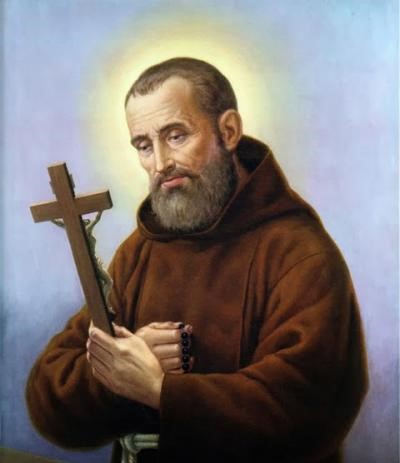
Saint of the Day for 12 January: St. Bernard of Corleone
St. Bernard of Corleone: A Spiritual Journey through Sicilian History
Name
St. Bernard of Corleone
Title
Religious
Baptismal name
Filippo Latini
Birth
February 6, 1605, Palermo, Italy
Death
February 12, 1667, Palermo, Italy
Recurrence
12 January
Martyrology
2004 edition
Beatification
1768, Rome, Pope Clement XIII
Canonisation
June 10, 2001, Rome, Pope John Paul II
Prayer
O merciful Father, who in St. Bernard, shining example of constancy in the faith and model of extraordinary penance and heroic charity carried out in the practice of the evangelical virtues, you have imprinted the image of the new man created in justice and holiness, grant that we too may be renewed in spirit so that we may be worthy to offer you the sacrifice of praise. Through Christ our Lord. Amen
Roman Martyrology
In Palermo, St. Bernard of Corleone, of the Order of Capuchin Friars Minor, distinguished for admirable charity and the spirit of penance.
The Saint and Mission
St. Bernard of Corleone represents an emblematic figure when reflecting on the notion of mission in Christian spirituality. His life, immersed in the challenges and realities of 17th-century Sicily, reflects a path of personal transformation that later became a mission of service and dedication to others.The most significant element of his mission lies not only in his tangible actions of assistance and care for the less fortunate, but also in the profound witness of faith that he embodied. Bernard, through his personal conversion and subsequent entry into the Franciscan order, demonstrates how mission is not just an outward action, but an inner journey of continual search for and adherence to Gospel values. His story teaches us that true mission begins with an internal change, a spiritual renewal that then spills over into the external world through acts of charity, justice and life witness. In this, St. Bernard of Corleone becomes a powerful symbol for those who seek to understand the deeper meaning of being missionaries in today’s world: not only by doing, but above all by being living witnesses of a faith that translates into action.
The Saint and Mercy
St. Bernard of Corleone is a shining figure in the history of the Catholic Church, particularly for his deep commitment to mercy. Born in a 17th-century Sicily marked by turbulence and conflict, Bernard found refuge in faith and became a beacon of hope and charity for his contemporaries. His life, once intertwined with violence, was radically transformed after he entered the Franciscan order. What is most striking about St. Bernard’s story is how mercy became the core of his being. Not only did he practice mercy in tangible ways through acts of charity and assistance to the needy, but he also embodied it in his daily interaction with others, displaying an incredible capacity for forgiveness and understanding. His life teaches us that mercy is not simply an external act, but an inner attitude that profoundly transforms those who practice it and those who are its recipients. The story of St. Bernard of Corleone is a powerful reminder of the saving power of mercy. In a world often marked by indifference and harshness, his life invites us to rediscover mercy as the way to a more just and compassionate society.
Hagiography
His real name was Filippo Latini, and he was born in Corleone, Sicily to a family of very religious shoemakers, so much so that they were known in the town as “the house of saints.” He worked as a shoemaker and was very kind to the poor to the point of begging for them.
In those days the town was presided over by a Spanish legion. Philip considered the best swordsman in Sicily was elected as ‘the best blade in Sicily.’ Thus he did not flinch when he had to defend from abuse some maiden distressed by the military or the squires, or the poor reapers despoiled of the fruits of their labor. One day to prove his skill with the sword he was invited to a stupid duel where he seriously wounded his opponent, who had provoked him, in the hand. He was only 19 years old and sought refuge in a church, where he had time to meditate on his life, apologized to his opponent, who became his friend. In 1631 he applied to join the Capuchins at the convent in Caltanissetta, Sicily, and when he took the habit he took the name Bernard. Over the years everyone learned to call him ‘the good friar,’ father of the wretched and all those in need of spiritual comfort. His simple life took place in various convents in the province: Bisacquino, Bivona, Castelvetrano, Burgio, Partinico Agrigento, Chiusa, Caltabellotta, Polizzi and finally in Palermo where he spent the last 15 years of his life and where he died. He entered the convent as a lay brother and was a cook, laundress and did penances and …
